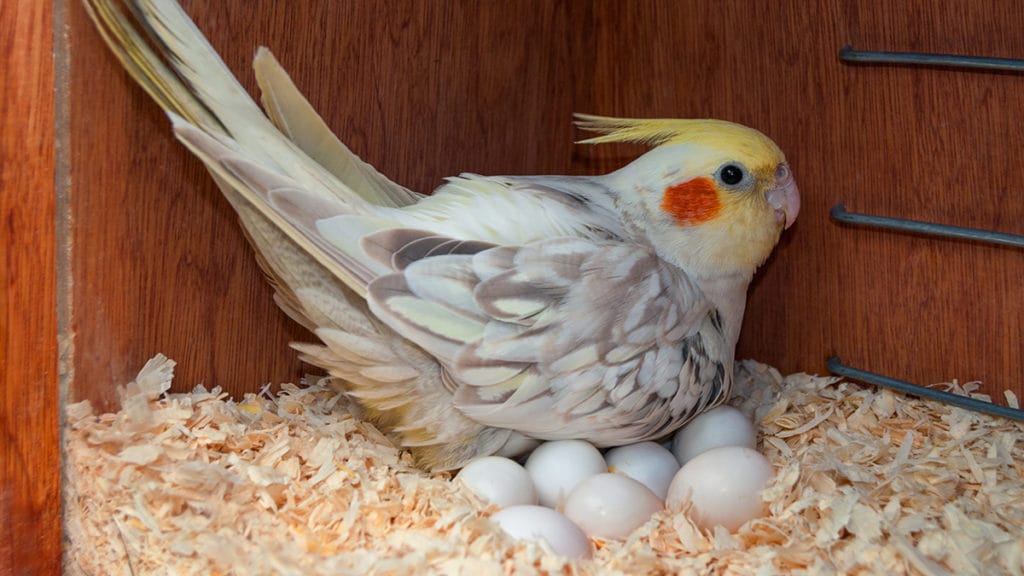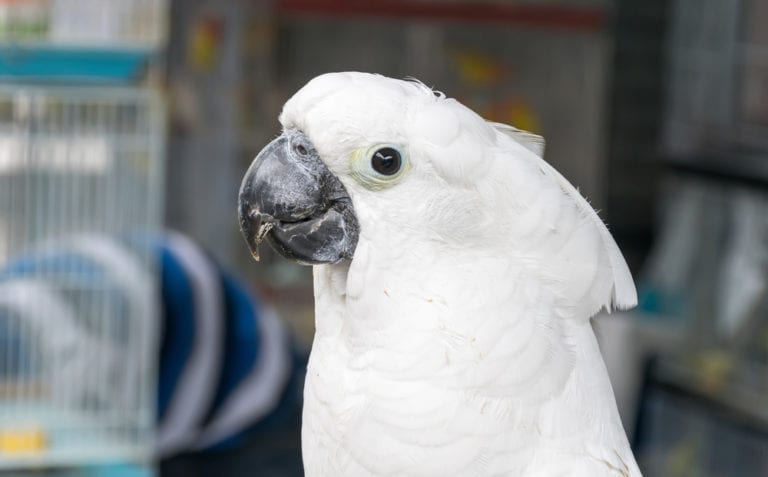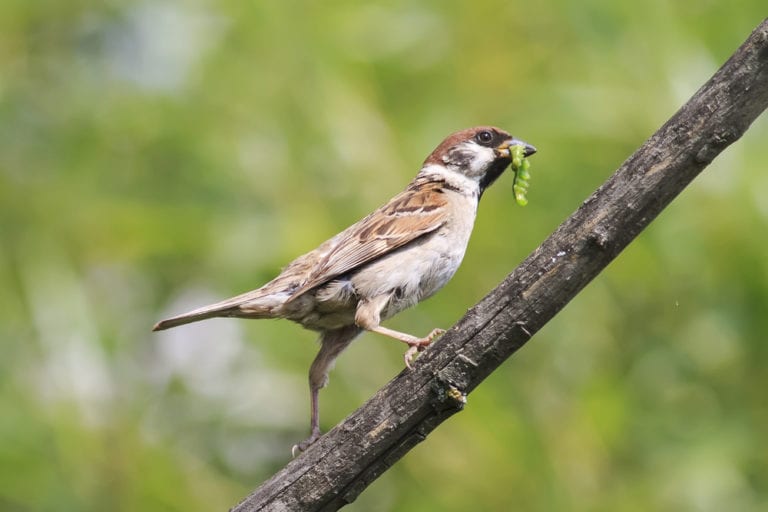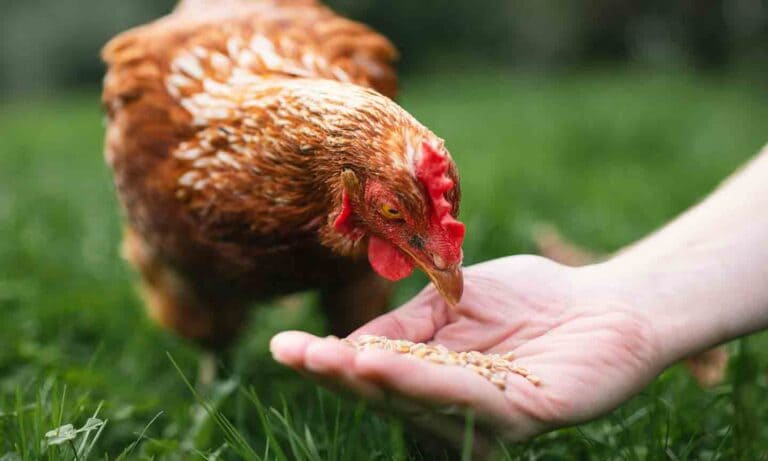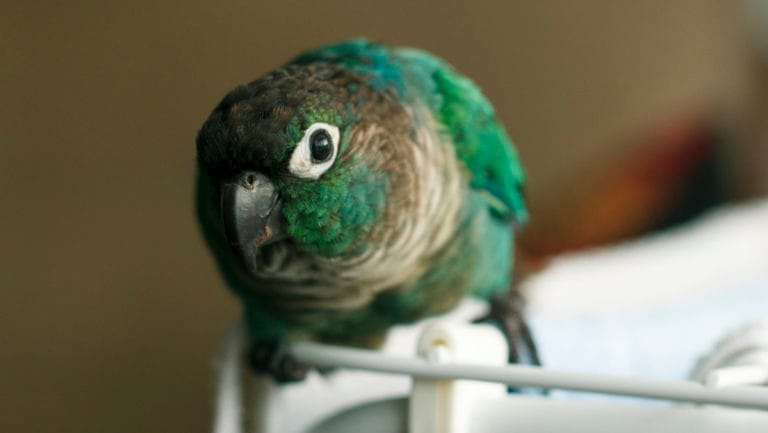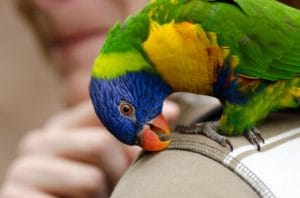How do birds lay eggs? Most people don’t know it, but all female birds can lay eggs, regardless of whether they have mated with a male.
Think about chickens—they lay all the eggs we buy in supermarkets for us to eat without ever even seeing a rooster. The same is true for a pet bird laying eggs. The difference is that for most parrot species, males and females cannot be distinguished just by looking at them, because parrots do not have external sex organs and males and females only look different in a handful of species.
How Do Birds Lay Eggs?
Just like women, female birds ovulate follicles (small swellings that rupture) from their ovaries regularly, without any interaction with males. While ovulation leads to menstruation in women, female birds do not menstruate. Instead, their ova (or ovulated follicles) pass through their bodies and come out with a shell around them—the hard-shelled eggs we all are familiar with.
While women ovulate all year round, wild female birds generally increase reproductive activity in response to environmental clues—such as longer day length and warmer temperatures in the spring—to prepare for egg-laying and having chicks. Pet birds living in our homes aren’t generally exposed to these changes in temperature and light, so they may ovulate and egg-lay year-round.
How Does an Egg Develop?
As embryos, birds have two ovaries. As most birds mature (except in some species of raptors and in Australia’s brown kiwi), the right ovary typically regresses, leaving only the left one to develop.
The egg, or ovum, ruptures from the developing follicle on the surface of the ovary and passes into the funnel-like end of the oviduct (akin to a woman’s fallopian tube). As this small bundle of cells passes down the oviduct, a coating of yolk—the “food” source for a developing embryo if the egg is fertilized—is laid down around it. The ovum within the yolk then receives a further outer coating of albumen, or egg “white,” followed by membranes within the egg, and then the shell.
The hard shell, containing calcium and other minerals, is added last, while the egg is in the uterus, just before the egg enters the cloaca and leaves the bird’s body. The reproductive tract, urogenital (urinary and reproductive) tract and gastrointestinal tract all empty into this common chamber of the cloaca.
Birds pass eggs out of their cloacas to the outside of their bodies through the vent opening. This is the same place stool and urine (both the clear liquid urine and the white, solid, chalky uric acid part), exit.
To pass out normally, without getting stuck, the pointy end of the egg must face the vent. When it is not, or if the egg is oversized, birds can have problems laying, become “egg-bound” and require veterinary intervention to lay the egg.
For most parrots, it takes up to two days for the egg to pass from the ovary, through the oviduct and out through the vent. Thus, in general, female parrots can lay an egg nearly every other day!
What Happens When an Egg Is Fertilized?
Eggs are fertilized internally before they are laid, so an egg already laid by a single female bird cannot be fertilized. If it occurs, fertilization happens early on in the oviduct, before the yolk and egg white are coated onto the ovum, as the cells of the ovum are dividing.
For fertilization to occur, the female must have been mated with a male prior to having the ovarian follicle ovulate the egg into the oviduct. The male’s sperm hang out in the oviduct for several days, waiting to encounter a developing ovum, before they die off.
If sperm are present in the oviduct as the dividing ovum passes through, sperm penetrate the ovum, fertilizing the egg. Then it passes through the rest of the oviduct, as described above.
Externally, the fertilized egg looks just like the unfertilized egg. The difference is that after the female bird incubates it by sitting on it in the nest—for a period of days to weeks depending on the species—out pops a baby bird!
By: Laurie Hess, DVM, Diplomate ABVP (Avian Practice)
Featured Image: iStock.com/Jarin13
Share:
